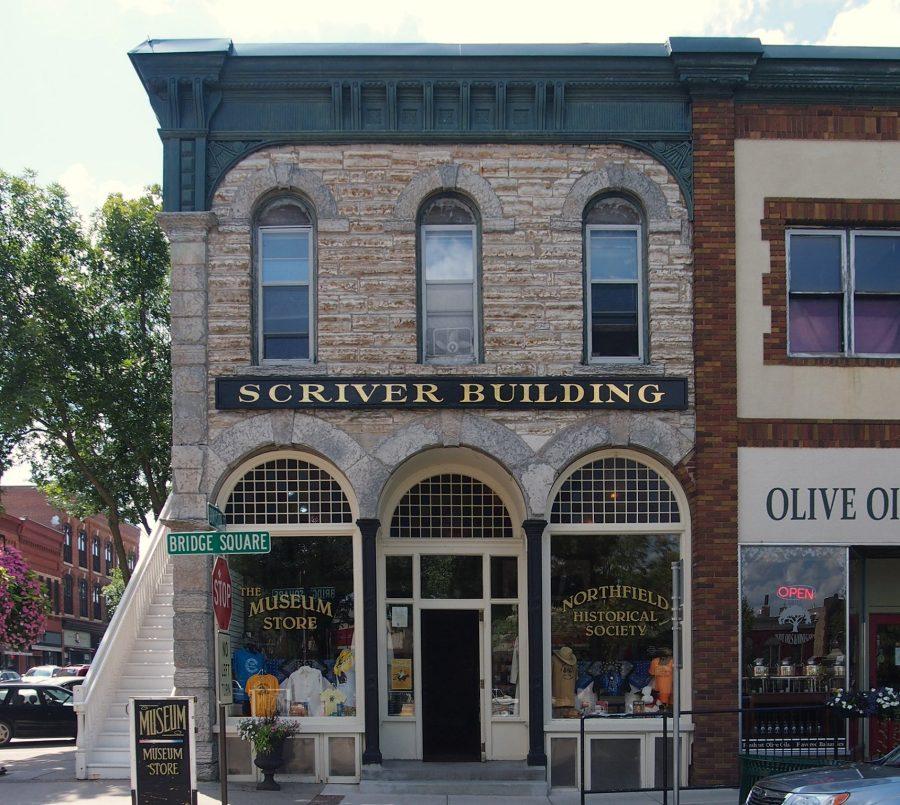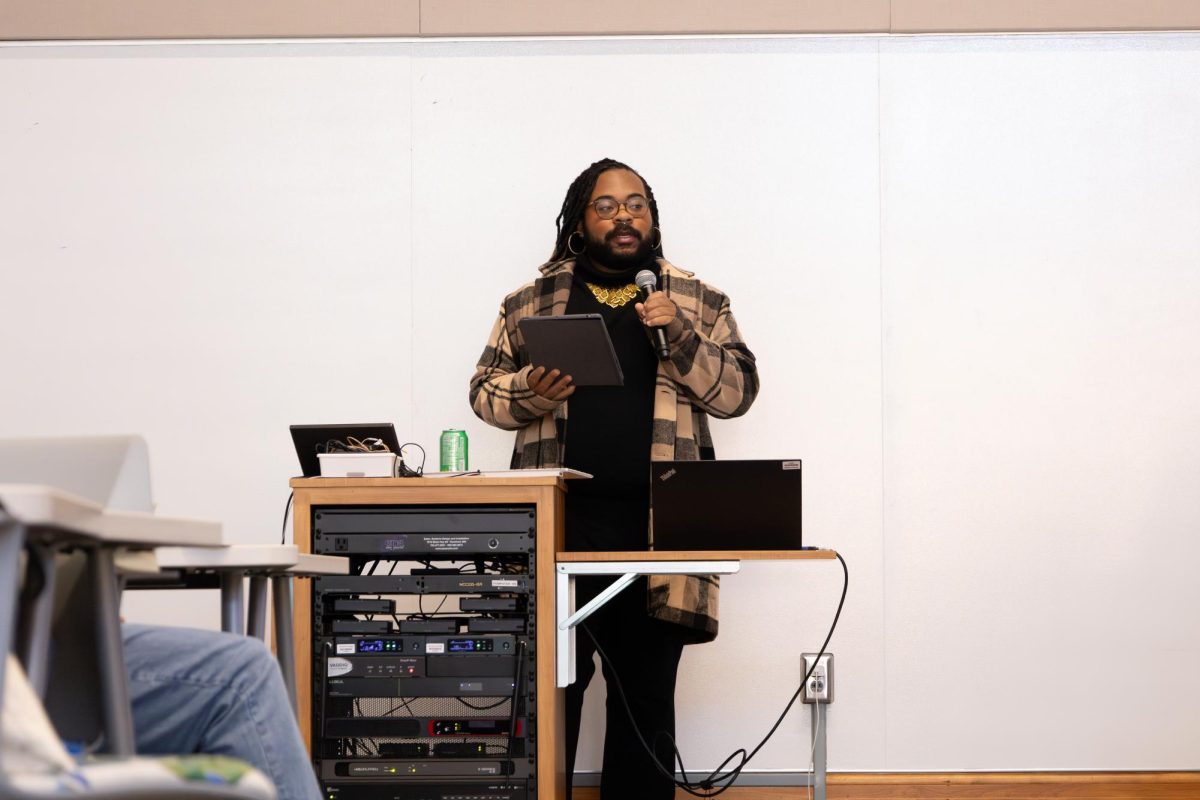As the country is caught in the midst of the COVID-19 pandemic, a couple of Carleton students have turned to history and the community for perspective. Students from two classes—Historians for Hire and Anthropology of Health and Illness—came together over winter break to discuss the parallels between Northfield’s history in the 1918 influenza pandemic, and the community’s current experience with COVID-19. The podcast and Academic Civil Engagement (ACE) project, titled “Comparing Spanish Influenza and COVID 19 in Northfield,” was posted on February 15 on the Northfield Historical Society (NHS) website.
Roughly two weeks into winter break, three students from Historians for Hire—Lea Winston ’22, KatieRose Kimball ’23, and Sasha Mothershead ’21—and three students from Anthropology of Health and Illness—Marcella Lees ’21, Cas Roland ’22, and Jakob Boeye ’22—discussed their findings over an hour-long Zoom call. The meeting was recorded, produced by Roland—who has their own podcast—and uploaded to the NHS website as a podcast.
“We wanted to make sure that we had something to give to the Northfield Historical Society,” said Lees.
The idea for the podcast came about through collaboration with the director of the Northfield Historical Society, Cathy Osterman; the professor teaching Anthropology of Health and Illness, Pamela Feldman-Savelsberg; and the associate director for ACE in the Center for Civic and Community Engagement (CCCE), Emily Oliver.
“When COVID-19 started looming large, people were like, ‘Oh hey, there was a pandemic 100 years ago, what was that like?’” Osterman said. One of the goals of the project was to see “how something happening nationally impacted people in Northfield, for example: were people worried about it? What were hospitals doing? These are many of the same concerns we have about COVID today,” Osterman explained.
Historians for Hire has worked with the NHS in the past. Tony Adler ’06, a Carleton alum, started teaching the class during Fall Term and describes it as “essentially a public history class, in the sense that it’s introducing students to the work of history in practice.” Not only does the class give students a taste of history outside the classroom, but as an ACE course, students have the opportunity to work with different community organizations.
While students from the Anthropology of Illness and Health class researched different aspects of COVID-19’s effects on the community, the Historians for Hire class gathered information about the 1918 influenza’s impact on Northfield.
With Osterman’s help identifying digital sources, the Historians for Hire students set to work. The three students focused on a local newspaper coverage during the 1918 influenza, including the Carletonian (then called the Carletonia), St. Olaf’s Manitou Messenger, the Northfield News, and the Independent.
In addition to poring over digital archives, they were invited to the Northfield Historical Society to do some in-person digging. For Winston, those sessions provided a change in pace from normal life during COVID-19: “That was a really fun, really collaborative, and a nice group experience you can’t normally get in the pandemic, so I really appreciated being able to do that.”
“The three of us were actually given a lot of freedom,” said Kimball. Between their weekly meetings, the students would read through digital archives and type up notes. By the end of the term, they had compiled around 150 pages of material. At that point, “we started thinking, ‘well, we know all this, now how do we tell people about it? How do we present this information to the public?’” Winston said.
In order to make their findings more digestible, the students wrote formal paragraph responses to thematic questions Osterman had given them. The information they had gathered and condensed helped them create an online timeline, which is posted on the Northfield Historical Society website.
While Winston was researching, she learned the origins of the Sayles-Hill Campus Center’s name. “Mr. Hill was a beloved Carleton professor who died of the 1918 influenza, and it was a really big hit to the community,” Winston said. “It was on the front page of the newspapers with his obituary and photo and everything, and that’s who Sayles-Hill is named after. It’s like history is all around us, and we don’t even know it.”
At first, Winston said she was reluctant to do research on COVID-19. “I kind of was wary of doing a project about the pandemic, just because the pandemic was such a part of my life. I didn’t really want it to overtake my life even more than it already was,” said Winston. “But I ended up really enjoying it because, honestly, it gave me hope to see how people back then were able to persevere and make it through. There was an end to the 1918 pandemic, which was reassuring to learn about. If they did it then, we can get through this now.”
On the other hand, students from Anthropology of Illness and Health turned to the Northfield community for perspective. The three students researched, and wrote term papers, on COVID-19’s effects on different aspects of the community. Lees delved into the impact of the pandemic on the elderly, Roland into its effects on the medical system, and Boeye on the development and loss of the “third space, when people hang out at coffee shops or something, something that’s not work and it’s not home, where people meet and create community,” said Feldman-Savelsberg.
Lees noted that some of her biggest challenges were exacerbated by having her interviews online.
Not only was getting in contact with people more difficult online, but performing the interviews themselves presented challenges. Remote interviews, especially over phone calls, were difficult “because you can’t see people, you can’t see how they’re reacting. And it is a really sensitive topic,” Lees said. “This is life or death stuff sometimes. It’s having to balance your desire to record this for posterity, with their very real feelings and trauma around it right now.”
The interviews were not easy for Lees to stomach herself. “There were definitely interviews I left crying a little, because it’s hard to hear how much people are struggling,” said Lees.
Ultimately, Osterman said that “it was a little tough to draw parallels [between COVID-19 and the 1918 influenza] because we’re in the middle of it now.” While it was comparatively easy to find people who are affected by COVID-19 and record their experiences, the only information that exists on the 1918 influenza is what was written down in newspapers, “which don’t always include community members’ feelings, or disagreements,” said Osterman. On the other hand, there is more objective information and definitive start and end dates available on the 1918 influenza, while COVID-19 rages on.
Still, students were able to find some objective similarities between the two time periods. Spikes in case numbers, vigilant hand-washing and social distancing were all messages Winston saw in her research about the 1918 influenza. A major difference was that “there was very much a patriotic stance behind it that we don’t really see today,” Winston noted.
One of Osterman’s greatest takeaways from this collaboration was how “being able to pull different disciplines together—anthropology, history, health and medicine—creates a much fuller picture and understanding. Each discipline is adding context to another.”











